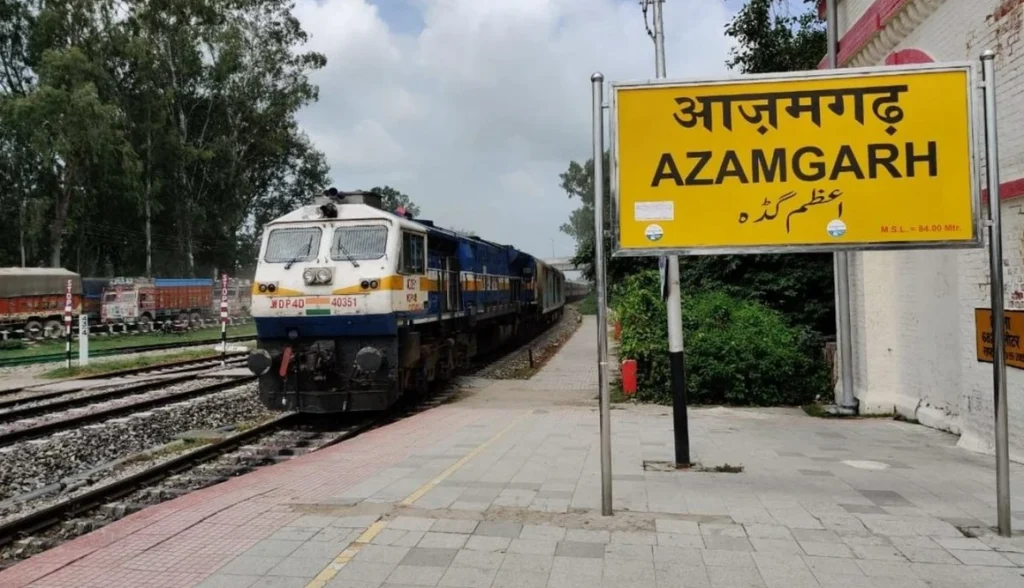Discover Azamgarh District, a hub of rich culture, history, and agriculture. Explore its vibrant traditions, arts, and fertile lands in the heart of Uttar Pradesh.

Explore Azamgarh: Heritage, Arts & Rich Agricultural Land
Azamgarh district is located in the eastern part of the state of Uttar Pradesh, India. It is bounded by the districts of Mau and Ballia to the east, Gorakhpur to the north, Sant Ravidas Nagar to the west, and Jaunpur and Ghazipur to the south. The district has an area of 4,054 square kilometers and a population of around 5 million people.
The district is named after its headquarters, the city of Azamgarh, which is also known as “Azamgarh City of Culture and Literature.” The city is famous for its rich cultural heritage and literary traditions, as well as for its historical significance as a center of education and learning.
The district is primarily an agricultural area, with the main crops being paddy, wheat, sugarcane, and various vegetables and fruits. However, there are also some small-scale industries in the district, including textiles, ceramics, and food processing.
Azamgarh has a rich history, with several important historical sites and monuments located in the district. The most notable of these include the fort of Azamgarh, which was built by the Mughal emperor Aurangzeb in the 17th century; the tomb of the Sufi saint Waris Ali Shah, which is a major pilgrimage site for Muslims; and the temple of Hanuman, which is one of the most important Hindu pilgrimage sites in the region.
The district is also known for its traditional crafts, such as pottery, weaving, and woodcarving. Azamgarh is also famous for its rich cuisine, which includes dishes such as dal bati, kachori, and lassi.
Azamgarh district has a good road and rail network, and is well connected to other parts of the state as well as the rest of the country. The district has a good education system, with several colleges and universities located in the area.
The district has a diverse population, with people from different religious and linguistic backgrounds living together in harmony. There are also several ethnic and tribal groups living in the district, such as the Rajbhars, the Mallahs, and the Pasi.
Despite being a district with rich cultural heritage and historical significance, Azamgarh is facing issues like poverty, unemployment and lack of development. The district needs more focus on its infrastructural development and industrialization to boost its economy.
Famous Places in Azamgarh district
Azamgarh district is home to several famous places, some of which include:
Fort of Azamgarh: This fort was built by the Mughal emperor Aurangzeb in the 17th century and is a major historical site in the district.
Tomb of Waris Ali Shah: This is a major pilgrimage site for Muslims and is dedicated to the Sufi saint Waris Ali Shah.
Temple of Hanuman: This is one of the most important Hindu pilgrimage sites in the region and is visited by thousands of devotees every year.
Martyr’s Memorial: It is a monument dedicated to the memory of the freedom fighters of the Indian Independence Movement.
Ramnath temple: This temple is dedicated to Lord Shiva and is one of the most ancient and important temples in the region.
Raja Mandap: This is a historical palace, built by Raja Suheldev, a great warrior and king.
Sant Ravidas Temple: This temple is dedicated to Saint Ravidas, a famous poet and philosopher of the Bhakti Movement.
Jama Masjid: This is one of the oldest and most famous mosques in the district and is a major pilgrimage site for Muslims.
Ganga Talab: This is a popular spot for picnics and is known for its beautiful surroundings and scenic views.
Gandhi Park: This park is dedicated to the memory of Mahatma Gandhi and is a popular spot for visitors to relax and enjoy the greenery.
These are few of the famous places in Azamgarh district, which are known for their historical, religious or scenic significance. Visitors to the district can experience the rich cultural heritage and natural beauty of the region by visiting these places.
Read More :-
